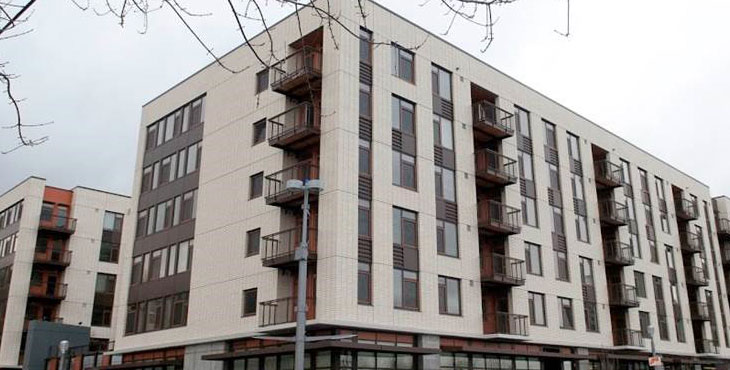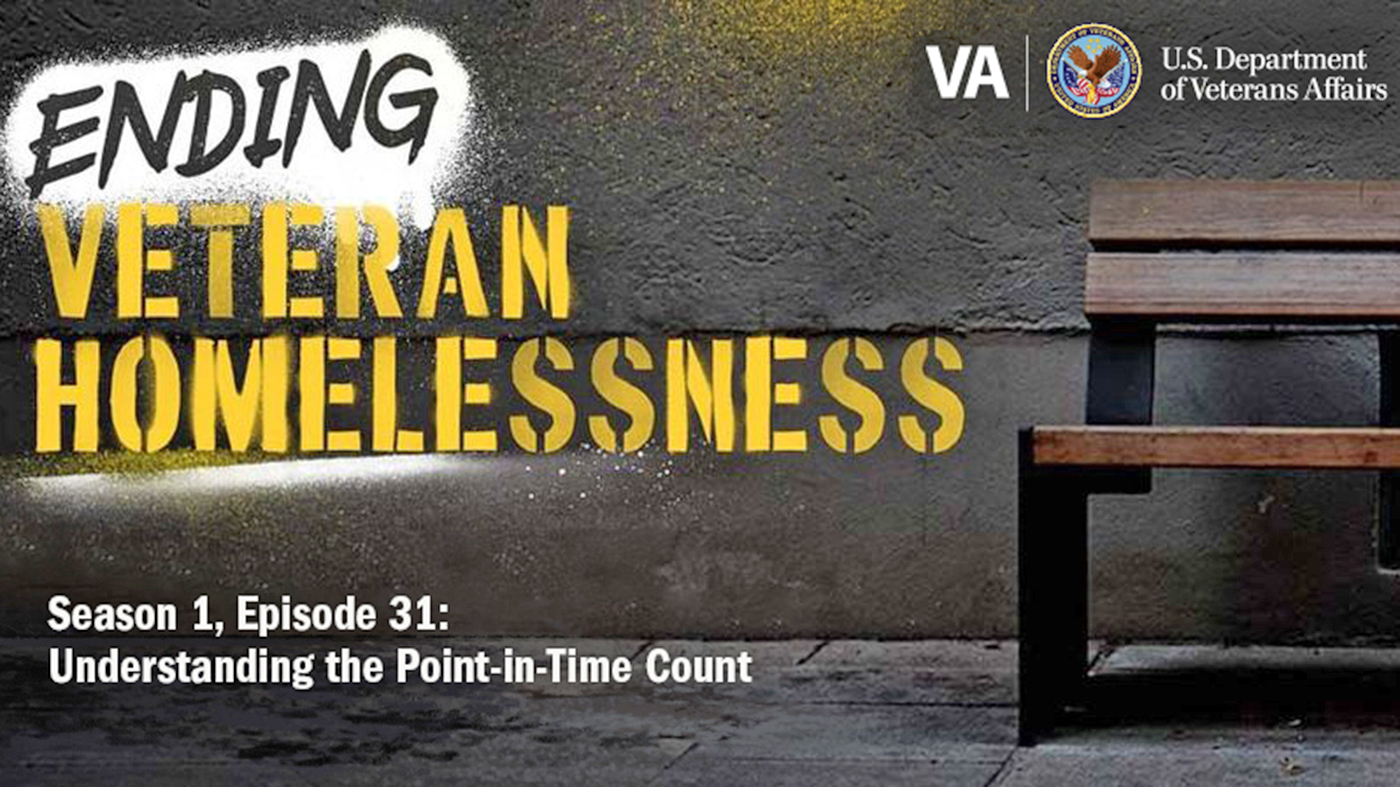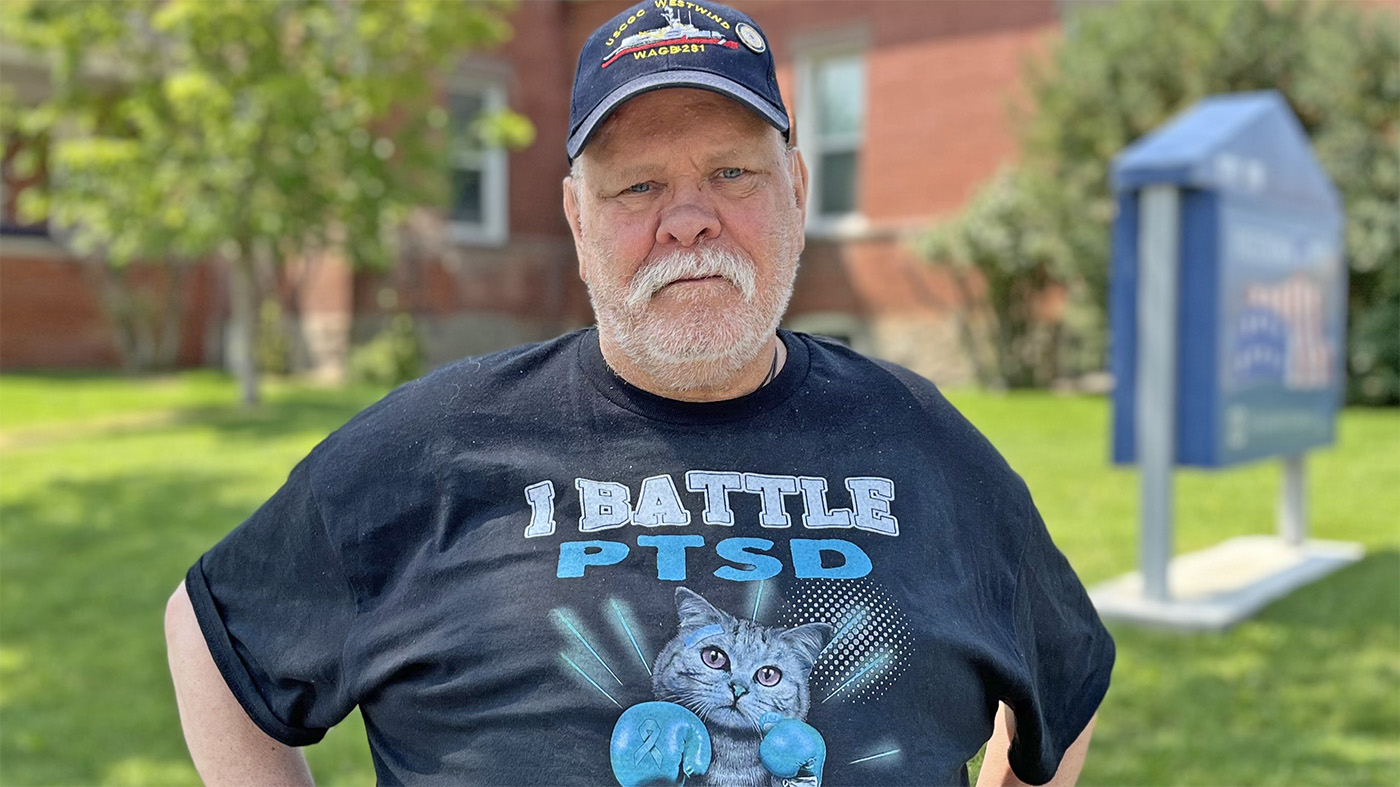Moving a Veteran from homelessness into a permanent home should ideally be a quick process. Yet the reality is that it sometimes takes a few weeks, or months, to transition a Veteran to an identified housing unit.
Community-based “bridge housing” can cover these gaps; however, within the mix of homeless programs offered by VA, this type of short-term housing solution has been historically limited.
That is, until now. In a March 1 letter, VA Deputy Secretary Sloan D. Gibson encouraged VA’s Grant and Per Diem (GPD) grantees to use up to 50 percent of their transitional housing beds nationwide for short-stay bridge housing as a way to speed Veterans’ exit from homelessness. Though length of stay in bridge housing can and should be individually determined based on Veteran need, it is generally not expected to exceed 90 days.
“As the nation marches toward the goal of ending and preventing Veteran homelessness, VA must make sure housing needs and available VA resources match up,” Gibson said. “The bridge housing option encourages GPD grantees to innovate and find more ways to make homelessness among Veterans even more rare and brief.”
Moving from Housing Ready to Housing First
State, local and tribal governments and nonprofits receive GPD funding to develop and operate housing and/or service centers for Veterans who are homeless. The “grant” part of the program funds 65 percent of the costs involved in acquiring, building, renovating or expanding housing facilities. “Per diem” funds help offset some of the costs associated with operating supportive housing or service centers.
When the GPD program began in 1994, the Housing First approach to ending homelessness was not widely practiced. Back then, it was thought that homeless individuals needed time to get “housing ready”—to complete substance use treatment or resolve mental health issues—before moving into a home of their own.
Housing First calls for homeless persons to move into permanent housing as quickly as practical, even if they have unresolved substance use or mental health issues. Practitioners of Housing First find that, once stably housed, Veterans are able to take advantage of supportive services to sustain their housing and rebuild their lives. And as more communities meet the national goal of ending Veteran homelessness, the need for longer term transitional housing has dropped.
Advancing a new vision
Recognizing the importance of GPD better aligning with Housing First goals and to broaden the array of housing options, VA is proposing a gradual transformation of the program. Under this new vision, GPD will support three types of housing: bridge housing, service-intensive transitional housing and transition-in-place housing, a successfully piloted approach that converts temporary dwellings to leased, permanent housing units for Veterans.
Although the complete transformation of GDP will require legislative tweaks to the program rules, current GPD grantees can move right away to use up to half of their transitional housing units for bridge housing.
Homeless Veterans who have secured permanent housing may face a short move-in delay while the permanent housing arrangements are finalized. GPD grantees can now use bridge housing to minimize Veterans’ hardship during this time and promote their successful move to a home of their own.
To do so, grantees must submit a written “change of scope” request to the VA GPD National Program Office for approval. Grantees should keep the following additional directions in mind:
- Plan bridge housing services in close coordination with VA homeless programs, Supportive Services for Veteran Families providers and local continuums of care.
- Keep i individual service plans very short term and focused on the move to permanent housing.
As requests are approved, VA will track Veterans participating in bridge housing services to better gauge their housing and services needs on an ongoing basis.
These recent changes to the GPD program demonstrate VA’s ongoing commitment to refining programs as needed to meet the evolving needs of Veterans and their family members.
Learn More
Find out more by visiting the GPD website and downloading the letter and frequently asked questions or contacting the VA GPD National Program Office at 877-332-0334 or via email to VA Grant and Per Diem Program.
If you encounter Veterans who are homeless or at imminent risk of becoming homeless, encourage them to call or visit their local VA Medical Center, where VA staff are ready to assist. Veterans and their families can also access VA services by calling 1-877-4AID-VET (1-877-424-3838).

Topics in this story
More Stories
William Snow, senior program specialist at HUD, explains how the Point-in-Time Count provides valuable data on Veteran homelessness.
VA permanently housed 47,925 homeless Veterans in fiscal year 2024, exceeding its goals for the third year in a row.
VA Housing First changed the life of Grady Kendall, Coast Guard Veteran, because it was there when life knocked him down.







Why should anyone like this disabled veteran have to give up their homes because of health issues or any issue that may arise while here at home. Nor should they have to pay for any services needed. Their disability came from protecting this country so Every American can enjoy their liberties while being at peace. I am also a disabled veteran that too don’t understand why most miss the point. STOP TAKING FROM US its a daily battle here at home to save what little we try to hold on to. Why is it non-Americans can enjoy the freedoms that we fought to have but we are denied everything. Most veterans have lost pieces of themselves in foreign lands never to ever be retrieved. Broken as we may be why keep chipping away at us as if we are a burden to our own country. We look around and see the very people whom we fought behind 95% of America registers, occupying our shelters, working our jobs, occupying our schools and educational systems, especially in our VA medical facilities across this country. Stones has been thrown and once it’s thrown it can’t be retrieved. I along with many (most) veterans has found ourselves fighting a no-win battle right here at home. Because of the situations faced we find ourselves stuck between a rock and a hard space. America doesn’t understand still what veterans face because they have no clue as to what challenges are placed and forced upon us. I have a problem with most of the resources out there that are supposed to be of help. Tell us veterans how are you helping when you turn us over to our enemies? Everywhere you send us it’s throws or unleashes triggers. I REFUSE to go back to the VA medical center because of the staff and physicians. They are our enemies that we have fought against and NO UNDERSTAND that. My physician doesn’t have a clue about the issues that veterans face. Most speak broken English and can’t understand a word they say. Do you think that’s help? NO. We are not a trusting people towards those whom has taken from us. We as a country can do much better for not only veterans but for every American. Until we stop being STUCK ON STUPID and provide for our own with our own maybe we can end this tragic era of self destruction among our veterans. Behind every cash register should be an American. Every VA physician should be an American not one that triggers the darkest time of their life. Not throw us in a situation or situations that ignites a trigger causing anger that ultimately causes some form of destruction. I realize many wants to help but the true understanding most miss because you’ve never walked a day in a veteran shoes. You will never get it even those with degree’s that try to analyze PTSD within veterans. Books from class rooms can’t touch the true reality of PTSD. I see the anger among my brothers and sisters of ARMS. Veterans also have to understand that our American brothers and sisters doesn’t understand our different challenges we face because we shared a different life than theirs so there has to be common ground found between us. Pushing pills isn’t a solution to PTSD I find pills are triggers leading to destruction of some manner. I for one especially because of the side affects don’t and won’t trust that. Secondly the person who authorized it I don’t trust. We didn’t trust them during war and definitely not now. I better stop but could go on and on about the things I believe would be of a great help to veterans if they can understand what we are facing and daily battles here at home. AMERICANS FIRST
I CONSIDER MYSELF TO BE “HOMELESS” BECAUSE THE MEDICARE/MEDICAID PEOPLE FORCED ME TO SELL MY HOME IN GOLD HILL, OREGON AFTER I HAD A MASSIVE HEMORAGIC STROKE AND ENDED UP IN A ” SKILLED NURSING FACILITY”, PAID FOR BY THE VA. THEY TOLD ME THAT I WAS NOT ALLOWED TO HAVE TWO HOMES AND THAT THE NURSING HOME WAS THE ONE I WAS “ALLOWED”! I WOULD RATHER BE IN AN “ASSISTED LIVING” FACILITY, BUT EVEN THOUGH IT WOULD BE LESS COSTLY FOR THE VA, THAT IS NOT ALLOWED UNLESS I PROVIDED AN ADDITIONAL $2,100 OF MY OWN FUNDS TO PAY FOR THAT! (EVEN THOUGH I AM 70% SERVICE-CONNECTED DISABLED).
DUANE S BAUMGARTNER ENCS USN (RET)
OREGON VETERANS HOME LEBANON
I’m a RN in a behavioral health facility. We treat some vets here that are in various stages of their treatment/rehabilitation. As a disabled vet myself I am always looking for ways to help other Vets. Can you provide me (I will also make copies for our social workers) of any links, application processes, referral processes for homeless vets and vets in need of long term psych. placement. Any information you can provide will be greatly appreciated and put to good use.
Respectfully,
Richard A. Rockhill
2Lt NJARNG (Ret)
Richard,
Start here: http://www.va.gov/homeless/ and then take a look at the quick links list on the right side of the page. Thank you!